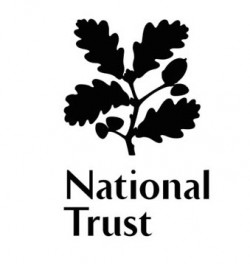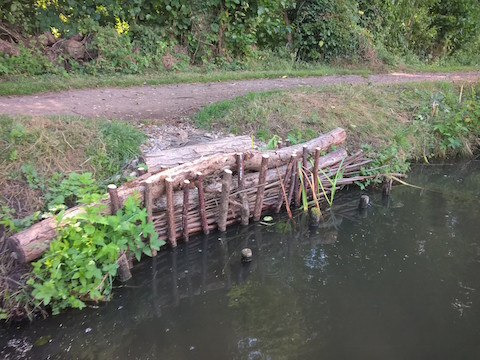 Abraham Lincoln
If given the truth, the people can be depended upon to meet any national crisis...
Abraham Lincoln
If given the truth, the people can be depended upon to meet any national crisis...
 Guildford news...
for Guildford people, brought to you by Guildford reporters - Guildford's own news service
Guildford news...
for Guildford people, brought to you by Guildford reporters - Guildford's own news service
Richard’s Wey July 2018
Published on: 14 Jul, 2018
Updated on: 14 Jul, 2018
 The latest report from Richard Cant, the Stoke lengthman on the River Wey Navigations
The latest report from Richard Cant, the Stoke lengthman on the River Wey Navigations
Summer certainly seems to have arrived with a bang over recent weeks, with consistently high temperatures and plenty of sunshine.
It seems funny now that in May I was writing about how the showery weather was interrupting my work programme whereas this month I’ve been fighting against the heat and trying to stay cool!
This is easier said than done when the main task for the month has been strimming back the vegetation along the towpath, a labour intensive and sweaty task especially when wearing overalls to protect myself from nettle stings and other nasty reactions to contact with plants.
Like with all the work we do on the river, strimming back vegetation is a balancing act for the needs of people and wildlife. This is why most of the vegetation is just cut back at a rough 45-degree angle so that the towpath is clear but we maintain the bulk of the vegetation as a habitat and food source for wildlife.

One of the areas of towpath erosion repaired by my volunteers. The timber is all hazel that we coppiced along the river last winter as part of our ongoing and sustainable tree management. The inclusion of reeds and other vegetation will mean the bank is held together and protected long after the wood has rotted away
The areas where you can see I’ve cut the vegetation right down are either for visiting boats to be able to moor up or, since the fishing season started again on June 16, for fishermen to be able to reach the water.
Again, this is a balancing act, this time trying to meet the needs of the fishermen by cutting swims in areas they would like to fish while avoiding sections where the towpath is too narrow to safely accommodate fishing and walking and cycling.
Another important task of late has been to continue the fight against non-native invasive species which have a detrimental impact on the biodiversity of our countryside. This has meant many hours spent pulling Himalayan balsam, thankfully with the help of not only my regular volunteers but also some youthful vigour from the local 2nd Guildford Scout Group who came to help for an evening.
As well as the balsam, I’ve also been continuing to treat the Japanese knotweed along the entire navigation, which I’m pleased to say with persistent monitoring and treatment over the last few years has now been nearly eradicated from our property apart from just a couple of small isolated patches.
On the theme of invasive species, we continue this year to have a commercial fisherman removing the non-native signal crayfish from the river to try and reduce the negative impact they are having on not only our native crayfish but also fish populations and bank conditions.
Please don’t try this yourself as they have a special licence from the Environment Agency and permission from the National Trust so as to ensure no detrimental impact on the property or wildlife.
Other tasks have been to continue mowing the locksides (by the end of June I was cutting more dust than grass), trying to keep on top of the increased litter that inadvertently comes with the nice weather and extra visitors, and carrying out bank repairs in eroded areas.
All in all, a productive and enjoyable few weeks out on the river in the sunshine and long may it continue!
Richard
Stoke Lengthsman
07786 703 832

See Dragon story: GBC’s Explanation of Major Land Sale Notice Error ‘Borders on Arrogant’ Says Councillor







Recent Articles
- Zero Re-opens Uptown
- Letter: I Hope the New CEO Will Reflect on the Constructive Advice
- Campaign to Encourage Visitors to the Surrey Hills To Go by Train
- Police Commissioner Office Ordered to Remove Social Media Messages
- Police and Crime Commissioner Candidate Interview – Kate Chinn
- Guide to Telephone Befriending Services for Older People
- Stage Dragon: Sleuth at the Yvonne Arnaud Theatre
- Guildford Lido All Set for the 2024 Season
- Appointment of Permanent Joint Strategic Director of Finance Confirmed
- Police and Crime Commissioner Candidate Interview – Alex Coley


Search in Site
Media Gallery
Dragon Interview: Local Artist Leaves Her Mark At One of England’s Most Historic Buildings
January 21, 2023 / No Comment / Read MoreDragon Interview: Lib Dem Planning Chair: ‘Current Policy Doesn’t Work for Local People’
January 19, 2023 / No Comment / Read MoreA3 Tunnel in Guildford ‘Necessary’ for New Homes, Says Guildford’s MP
January 10, 2023 / No Comment / Read More‘Madness’ for London Road Scheme to Go Ahead Against ‘Huge Opposition’, Says SCC Leader
January 6, 2023 / No Comment / Read MoreCouncillor’s Son Starts Campaign for More Consultation on North Street Plan
December 30, 2022 / No Comment / Read MoreCounty Council Climbs Down Over London Road Works – Further ‘Engagement’ Period Announced
December 14, 2022 / No Comment / Read MoreDragon Interview: GBC Reaction to the Government’s Expected Decision to Relax Housing Targets
December 7, 2022 / No Comment / Read MoreHow Can Our Town Centre Businesses Recover? Watch the Shop Front Debate
May 18, 2020 / No Comment / Read More






Recent Comments